Removal Procedure
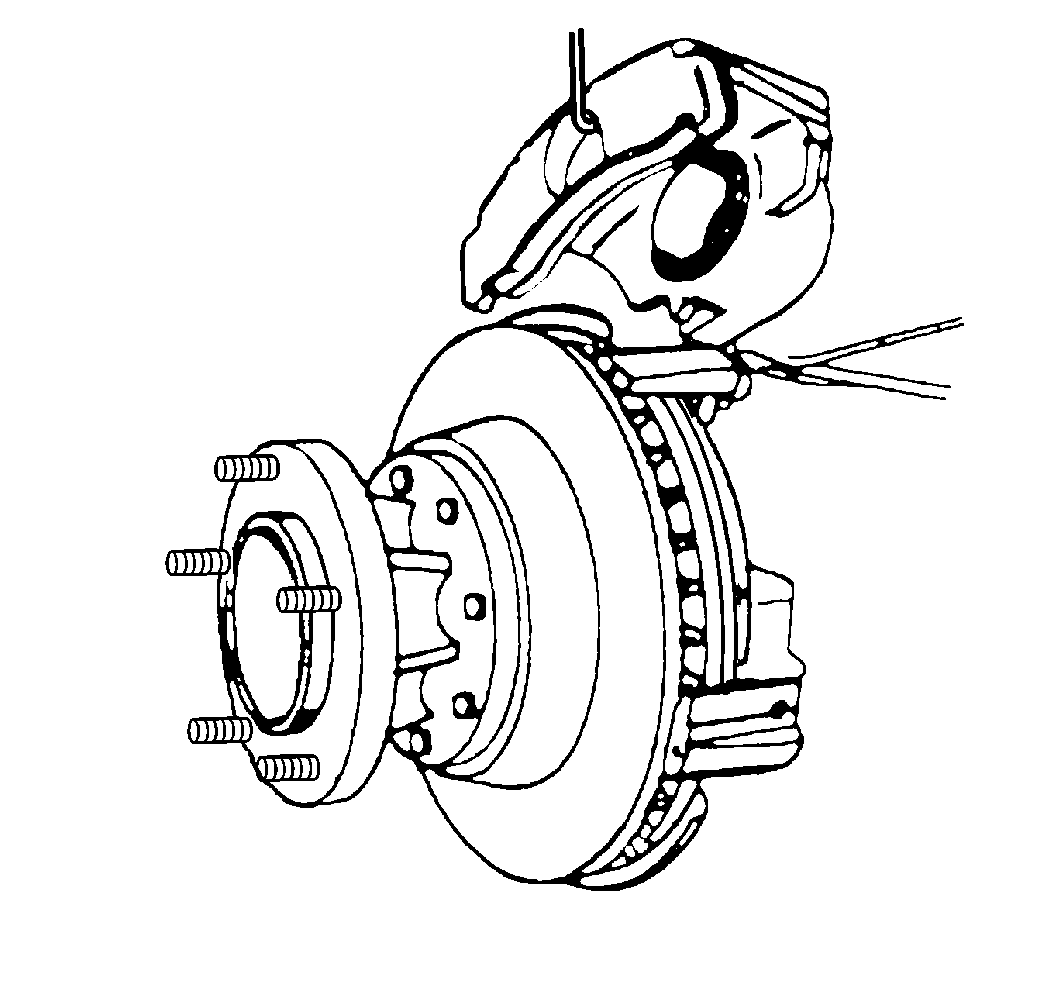
- Inspect the fluid level
in the brake master cylinder.
- If the brake fluid level is midway between the maximum-full point
and the minimum allowable level, no brake fluid needs to be removed from
the reservoir before proceeding.
- If the brake fluid level is higher than midway between the maximum-full
point and the minimum allowable level, remove brake fluid to the midway point
before proceeding.
- Raise and suitably support the vehicle. Refer to
Lifting and Jacking the Vehicle
in General Information.
- Remove the tire and wheel assembly. Refer to
Tire and Wheel Removal and Installation
in Tires and Wheels.
- Compress the front caliper piston.
| 6.1. | Install a large C-clamp over the top of the caliper housing and
against the back of the outboard pad. |
| 6.2. | Slowly tighten the C-clamp until the piston pushes into the caliper
bore enough to slide the caliper off the rotor. |
| 6.3. | Remove the C-clamp from the caliper. |
Notice: Support the brake caliper with heavy mechanic wire, or equivalent,
whenever it is separated from its mount and the hydraulic flexible brake hose is still connected. Failure to support the caliper in this manner will cause the flexible brake hose to bear the weight of the caliper, which may cause damage to the brake hose and
in turn may cause a brake fluid leak.
- Remove the caliper from
the mounting bracket and support the caliper with heavy mechanic's wire or
equivalent. DO NOT disconnect the hydraulic brake flexible hose from the
caliper. Refer to
Front Brake Caliper Replacement
.
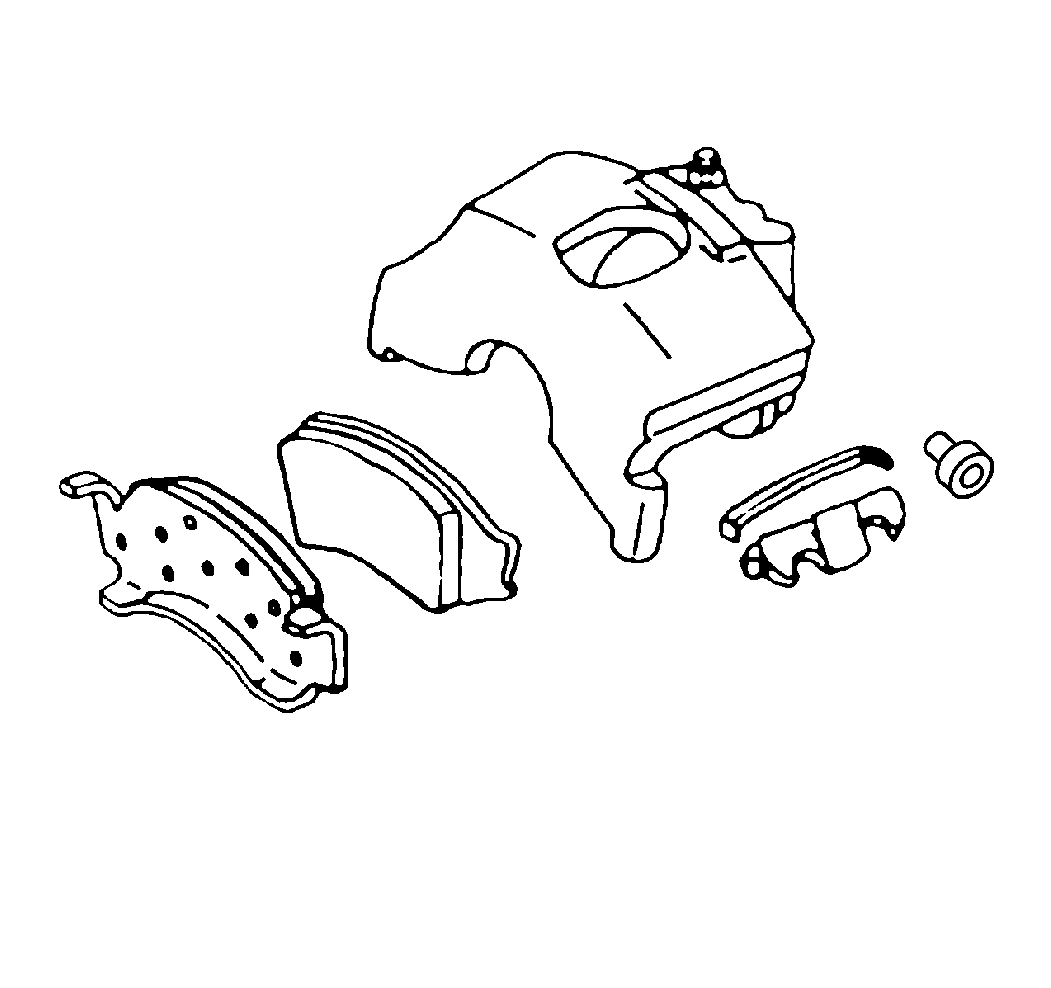
- Remove the inboard lining.
- Remove the outboard lining.
- Inspect the following parts for cuts, tears, or deterioration.
Replace any damaged parts:
- Inspect the caliper assembly for signs of fluid leakage. If any
leakage is detected refer to
Rear Brake Caliper Overhaul
in Disc Brakes.
- Use a wire brush to remove any corrosion from the machined surfaces
of the steering knuckle and the caliper.
Installation Procedure
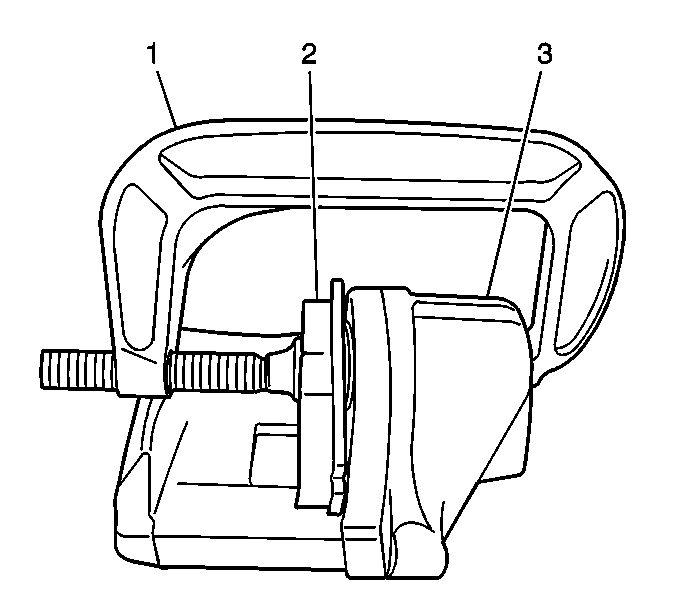
- Using a C-clamp (1), bottom
the piston into the caliper bore (3). Use an old brake pad (2) or wooden
block placed across the face of the piston. Do not damage the piston or
the caliper boot.
- Lubricate the caliper and the steering knuckle, or support, sliding
surfaces and the spring with high temperature silicone brake lubricant.
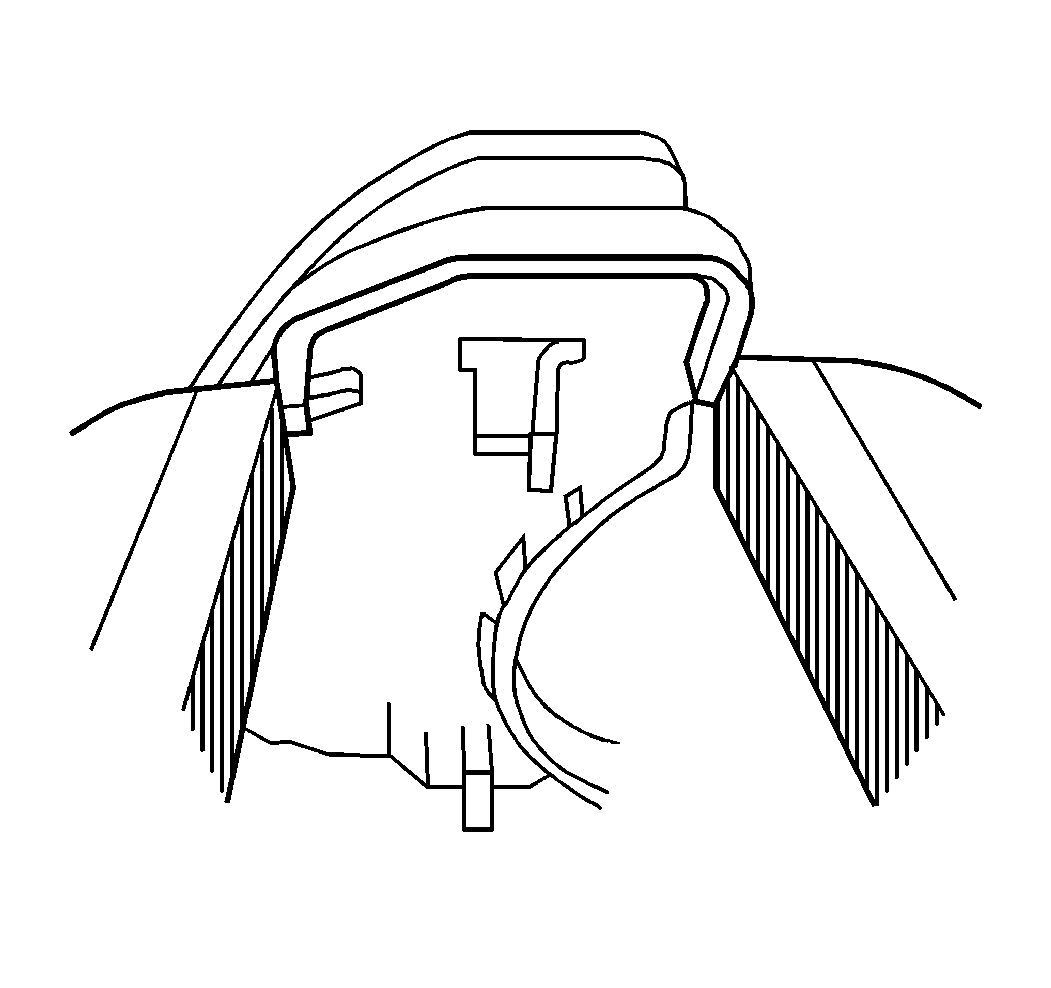
- Place the new pad in a vise.
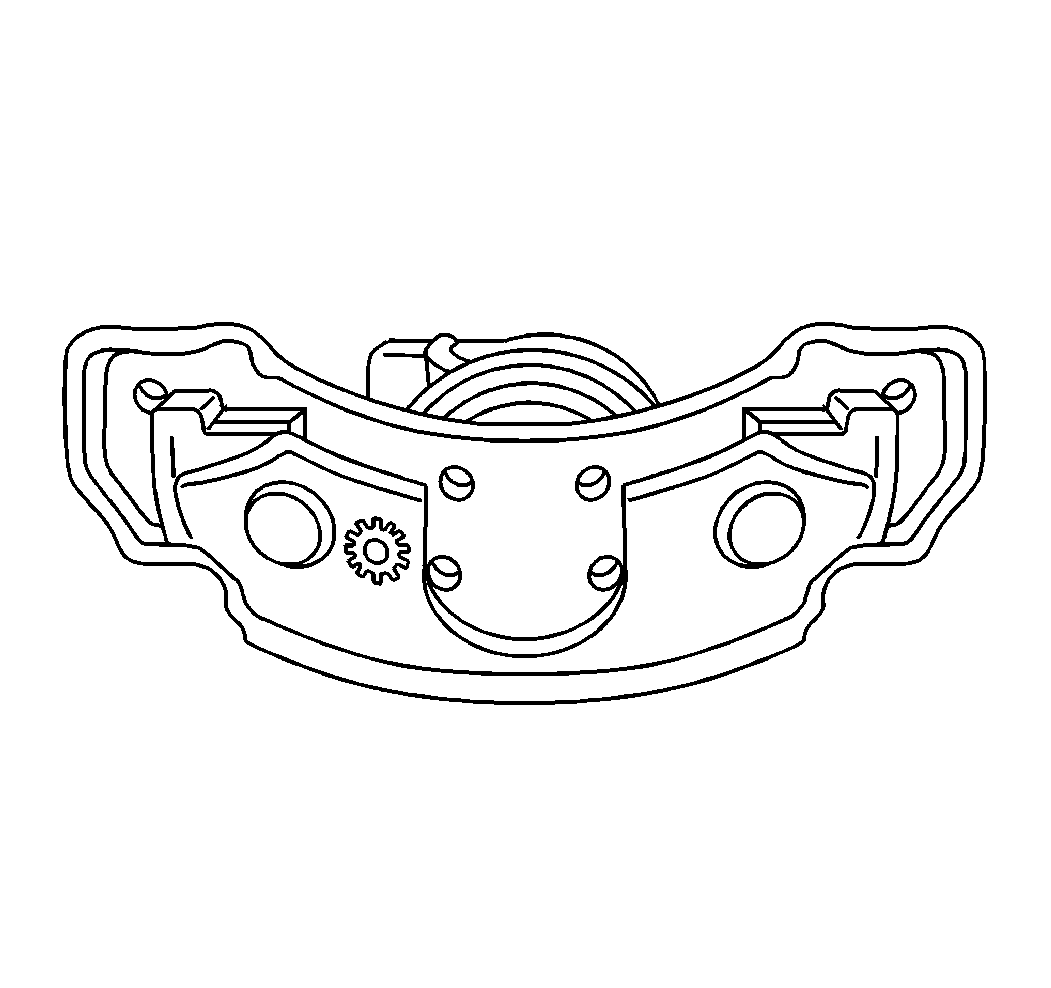
- Compress the vise as
needed to obtain a secure fit between the outer brake pad and the caliper.
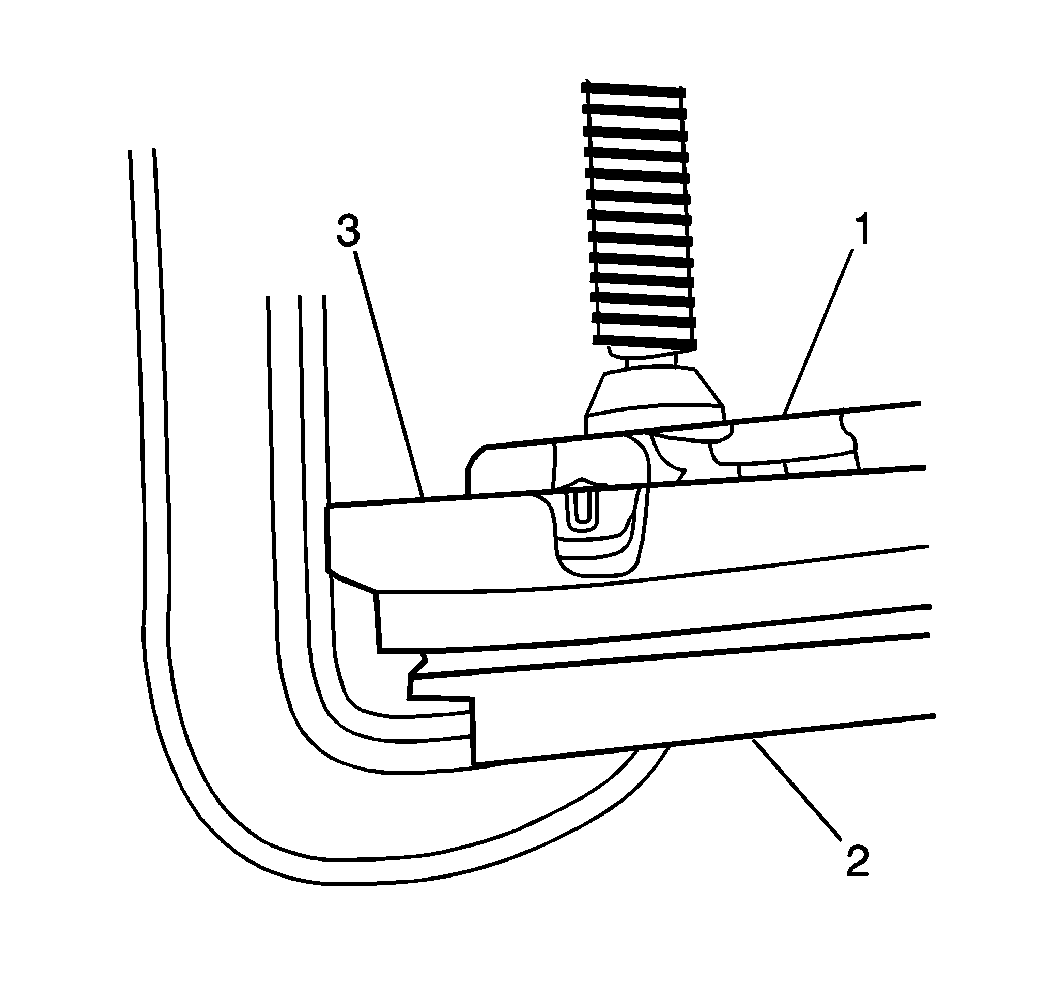
- Install the outer brake pad (3) onto the caliper (1).
| • | If it is necessary use a C-clamp to install the pad onto the caliper. |
| • | Do not allow the C-clamp to come into contact with the lining. |
| • | Insert a used brake pad between the C-clamp and the new brake
lining. |
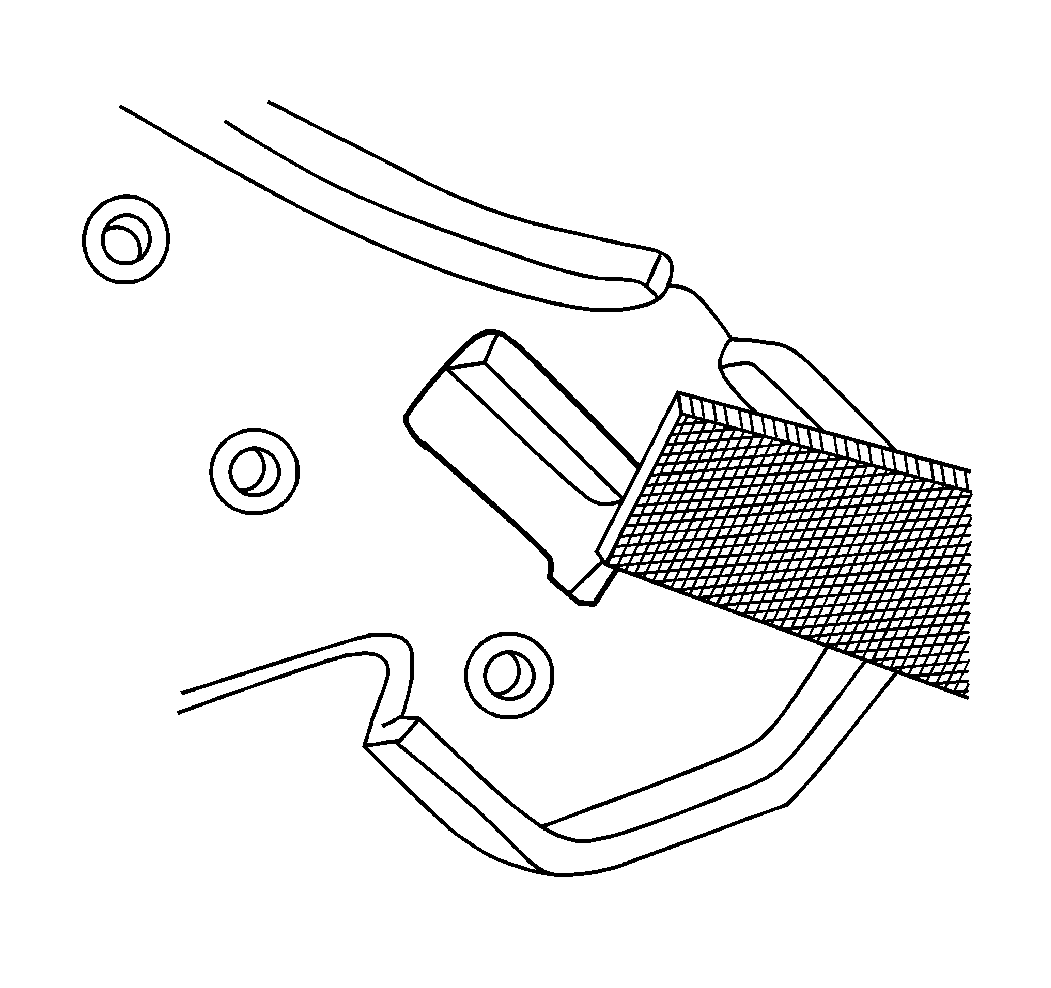
- File the leading edge of the brake pad tang to aid in the installation
of the brake pad to the caliper.
- Install the caliper. Refer to
Rear Brake Caliper Replacement
in Disc Brakes.
- Install the tire and wheel assembly. Refer to
Tire and Wheel Removal and Installation
in Tires and Wheels.
- Lower the vehicle.
- With the engine OFF, gradually apply the brake pedal approximately
2/3 of its travel distance.
- Slowly release the brake pedal.
- Wait 15 seconds, then repeat steps 10-11 until a firm brake pedal
is obtained. This will properly seat the brake caliper pistons and brake
pads.
- Fill the brake master cylinder to the proper level. Refer to
Master Cylinder Reservoir Filling
in Hydraulic
Brakes.
- Burnish the pads and rotors. Refer to
Brake Pad and Rotor Burnishing
.







